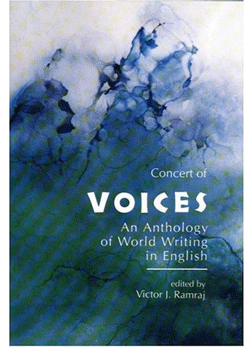The Story of an East Indian Family in Guyana
‘IMMIGRANT #99840 and Canecutter #7074, The Story of An East Indian Family in Guyana’ written by Lal Balkaran is both family history and autobiography.  As a family history, it also covers 100 years of Guyana’s history, 1905 – 2005. 1905 marks the beginning of the sojourn of Balkaran’s family in Guyana. The word ‘sojourn’ is deliberately used, for the book also tells the story of the advent of that family in the Diaspora.
As a family history, it also covers 100 years of Guyana’s history, 1905 – 2005. 1905 marks the beginning of the sojourn of Balkaran’s family in Guyana. The word ‘sojourn’ is deliberately used, for the book also tells the story of the advent of that family in the Diaspora.
‘Immigrant #99840 and Canecutter #7074, The Story of An East Indian Family in Guyana’ begins in India, from where the author’s foreparents came; how those fore- parents and their descendants lived in transit in Guyana before hovering (no doubt some will move on) in North America.
This book is “a most valuable document that fills a major gap in the writings which deal with the East Indian presence in Guyana. In focusing on an individual family’s history and its network of relationships, Lal Balkaran throws light on those more inward experiences of the Indo-Guyanese absent from the more general historical and social studies and which so far only fiction has hinted at.”
As an autobiography, Balkaran “writes a personal and individual narrative, …one which will be full of resonances for other Guyanese.” As a piece of Guyana’s history, “Balkaran’s research into this ‘micro-level’ aspect of history helps us to even better understand in general the historical evolution of the Guyanese nation.”
The book is replete with information “organised around nine chapters, with the issues and events categorised into sixty sub-headings. There are 41 photographs and copies of authentic immigration documents, a 141-word glossary, a 50-book bibliography, a profile of Guyana with unique statistics, and an 800-word index.”
This is how Balkaran describes those nine chapters:
“In Chapter 1, I started out by retracing the steps of the areas in West Bengal and Andhra Pradesh where my foreparents came. Their journey, their way of life, and adapting to a new country were all mentioned. Chapter 2 shows life on a typical sugar plantation and the class distinction instituted and encouraged by colonialism. In Chapter 3, I wrote about the more important issues surrounding my parents and the values they instilled in me in particular. Chapter 4 contains the sensitive issues of culture, caste, and religion in a multiethnic society. Origins and meanings of family names were carefully researched and explained.
“Growing up in a rural village (Pouderoyen) close to a sugar estate, Pln. Versailles, is mentioned in Chapter 5. The experiences in attending primary and secondary schools are touched on in Chapter 6, while political issues and events over the years, especially since 1961, are documented in Chapter 7. In Chapter 8, I talked about my five years in Guyana’s hinterland among the Waspishanas, a South American native Indian tribe. The way they lived, the geography of the area, and how I adapted to a change in culture and lifestyle as a teenager are all carefully documented here from actual experience. I also mentioned such issues and events like exploring the savannas, losing one’s way in the impenetrable jungles, hunting, farming, fishing, and everyday routine of the Waspishanas. Finally, in this last Chapter 9, emigrating and living in a First World country is examined in a broader context to cover such issues as adjusting to a new life in a multiethnic, multilingual, and multicultural environment…”
The sixty subheadings are of great interest to a general readership, wherein the author goes to great lengths, ventilating on culture, religion, politics, discrimination, education, economic policies. Many parts of those subheadings will resonate will particular individuals as the author talks about his love for music, the songs of the times, the Pouderoyen Drama Group, complete with actual printed programmes of the group’s activities, his admiration for Cheddi Jagan, the names of his teachers, and the names of text books used over the years.
Lal Balkaran was born in Pouderoyen, grew up on the West Bank of Demerara, attending primary and secondary schools in the said area. He is a Certified Internal Auditor, Certified General Accountant with an MBA from Heriot-Watt University of Edinburgh, Scotland.
He has numerous publications in that field of finance, and has written many important books on Guyana. His books on Guyana include ‘Timelines of Guyanese History’, ‘Bibliography of Guyana and Guyanese Writers’ and ‘Encyclopaedia of the Guyanese Amerindians’. His thirst for knowledge is insatiable, and he is magnanimous in his passion to share this acquired knowledge.
A reader is warned as to the magnitude of the book, and is warmed to the sacrifices and successes of the people in the book.
The author, in his introduction, was at pains to explain the larger backdrop, and the peculiar factors to the writing of this book via “Relating, comparing and contrasting from where I came to where I am; Creating a greater understanding of the life of my parents and foreparents; and Appreciating the qualities of humility and simplicity in an increasingly materialistic society.”
The hard data in ‘Immigrant #99840 and Canecutter #7074, The Story of An East Indian Family in Guyana’ has overshadowed the human element of the story. But the author, in his quest for perfection (especially of his publications), will no doubt very soon present a handy paperback-looking edition of his story.
(To respond to this author, either call him on (592) 226-0065 or send him an email: oraltradition2002@yahoo.com)
Immigrant #99840 and Canecutter #7074…
SHARE THIS ARTICLE :
Facebook
Twitter
WhatsApp



.jpg)









